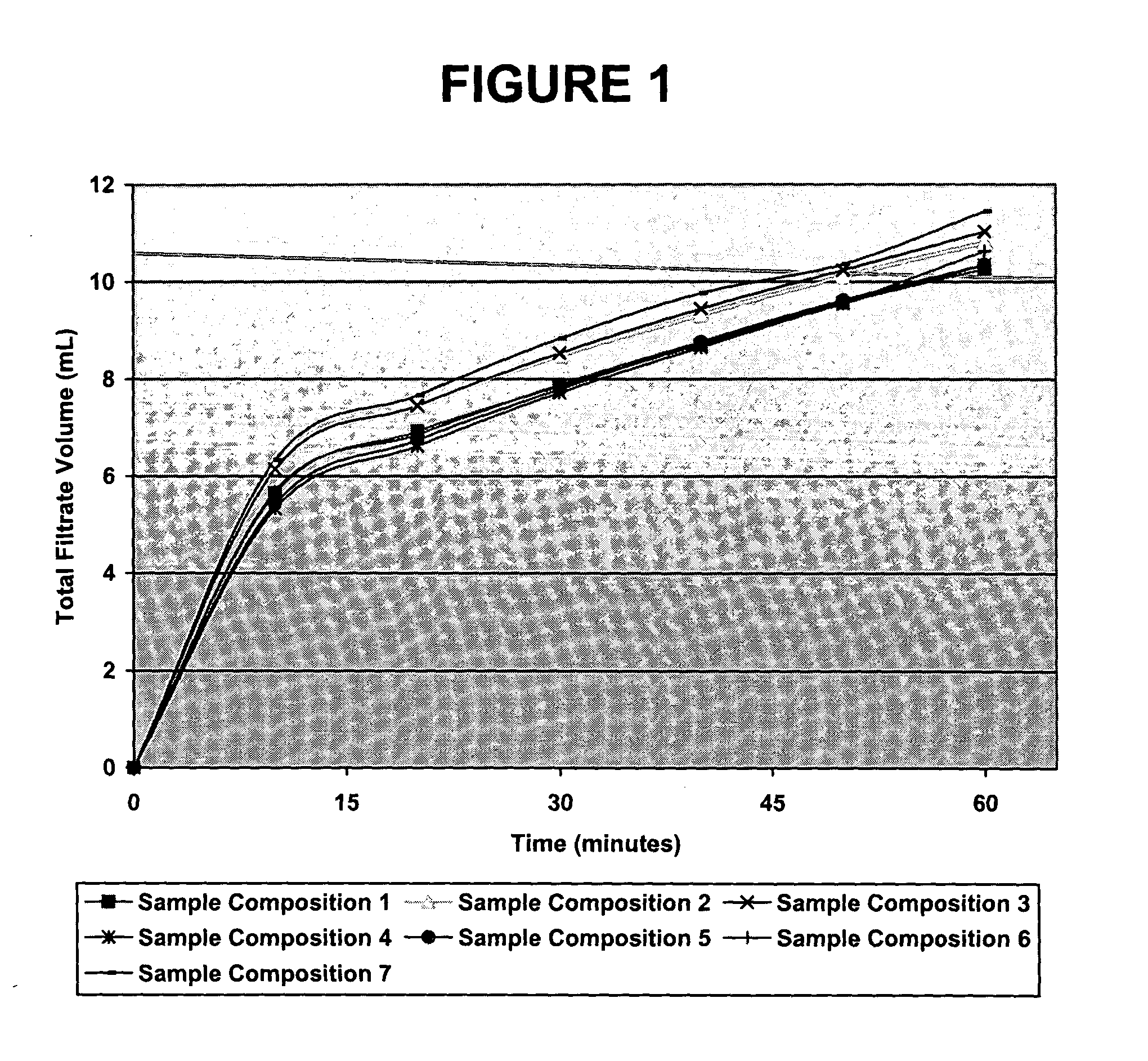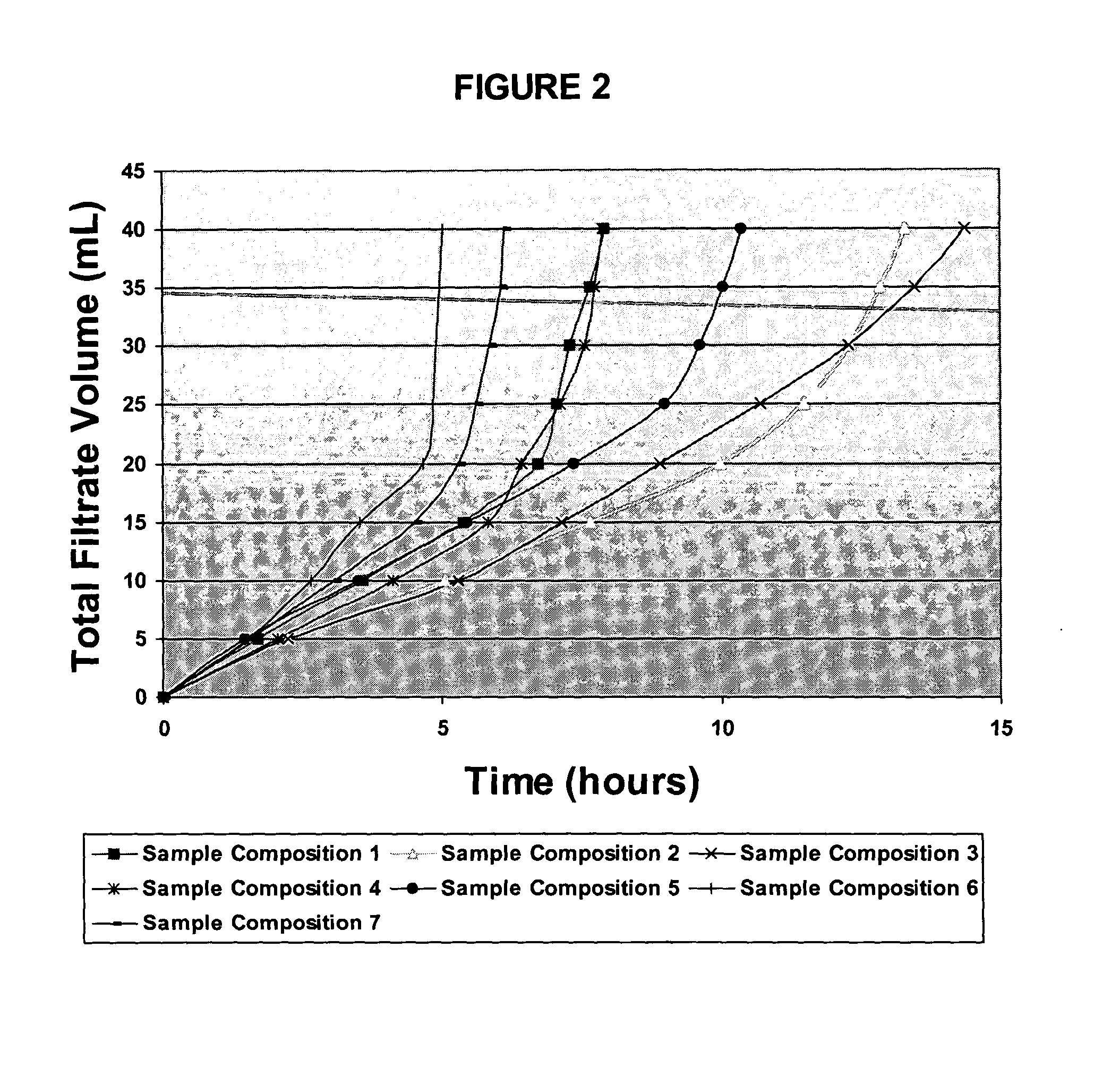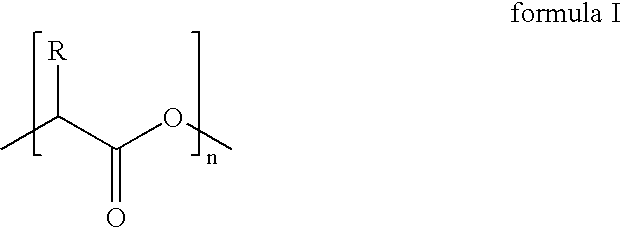Subterranean treatment fluids and methods of treating subterranean formations
a technology of subterranean formations and treatment fluids, which is applied in the direction of transportation and packaging, chemistry apparatus and processes, and well accessories, etc., can solve the problems of acid loss into the formation, damage to the producing formation, and equipment premature failure, so as to reduce the loss of fluid to the formation through the self-degrading filter cake
- Summary
- Abstract
- Description
- Claims
- Application Information
AI Technical Summary
Benefits of technology
Problems solved by technology
Method used
Image
Examples
example 1
A dynamic filtration test was conducted, in a Fann Model 90B dynamic filtration tester, in which seven embodiments of filter cakes of the present invention were constructed. For each of the seven embodiments, a sample composition was formulated comprising 336 mL of a 10% aqueous solution of sodium chloride by weight, to which 0.85 grams of clarified liquid xanthan biopolymer, 7.4 grams of a non-ionic starch derivative, 20 grams of powdered polylactic acid, and 30 grams of calcium carbonate were added. This sample composition was then hot rolled for 16 hours at 150° F.
The dynamic filtration test comprised constructing filter cakes on the inner diameter of a synthetic core comprising “ALOXIT™” having a 35 micron pore throat size. The filter cakes were constructed by continuously shearing each sample composition inside the core for an hour while applying a differential pressure of 500 psid, during which time the filter cake formed on the core's inner diameter. The porous nature of t...
example 2
The seven sample filter cakes prepared in Example 1 were then each subjected to a break test, in which a 10% aqueous solution of sodium chloride by weight was injected into the core at 50 psi differential pressure. Break tests for Sample Compositions 1, 2, 4, and 6 were conducted at 200° F., while break tests for Sample Compositions 3, 5 and 7 were performed at 180° F. As the sodium chloride solution began to break down each filter cake, the amount of filtrate (e.g., the amount of broken filter cake) was collected and measured. The break test continued until such time as the maximum filtrate volume (50 mL) of a particular sample was collected in the Model 90B dynamic filtration tester. The results are illustrated in Table 2 below and in FIG. 2.
TABLE 2Time (hrs)TotalSampleSampleSampleSampleSampleSampleSampleFiltrateCompositionCompositionCompositionCompositionCompositionCompositionCompositionVolume (mL)12345670000000051.712.252.252.071.451.511.59103.595.065.284.113.492.663.07155.39...
PUM
| Property | Measurement | Unit |
|---|---|---|
| Fraction | aaaaa | aaaaa |
| Fraction | aaaaa | aaaaa |
| Fraction | aaaaa | aaaaa |
Abstract
Description
Claims
Application Information
 Login to View More
Login to View More - R&D
- Intellectual Property
- Life Sciences
- Materials
- Tech Scout
- Unparalleled Data Quality
- Higher Quality Content
- 60% Fewer Hallucinations
Browse by: Latest US Patents, China's latest patents, Technical Efficacy Thesaurus, Application Domain, Technology Topic, Popular Technical Reports.
© 2025 PatSnap. All rights reserved.Legal|Privacy policy|Modern Slavery Act Transparency Statement|Sitemap|About US| Contact US: help@patsnap.com



